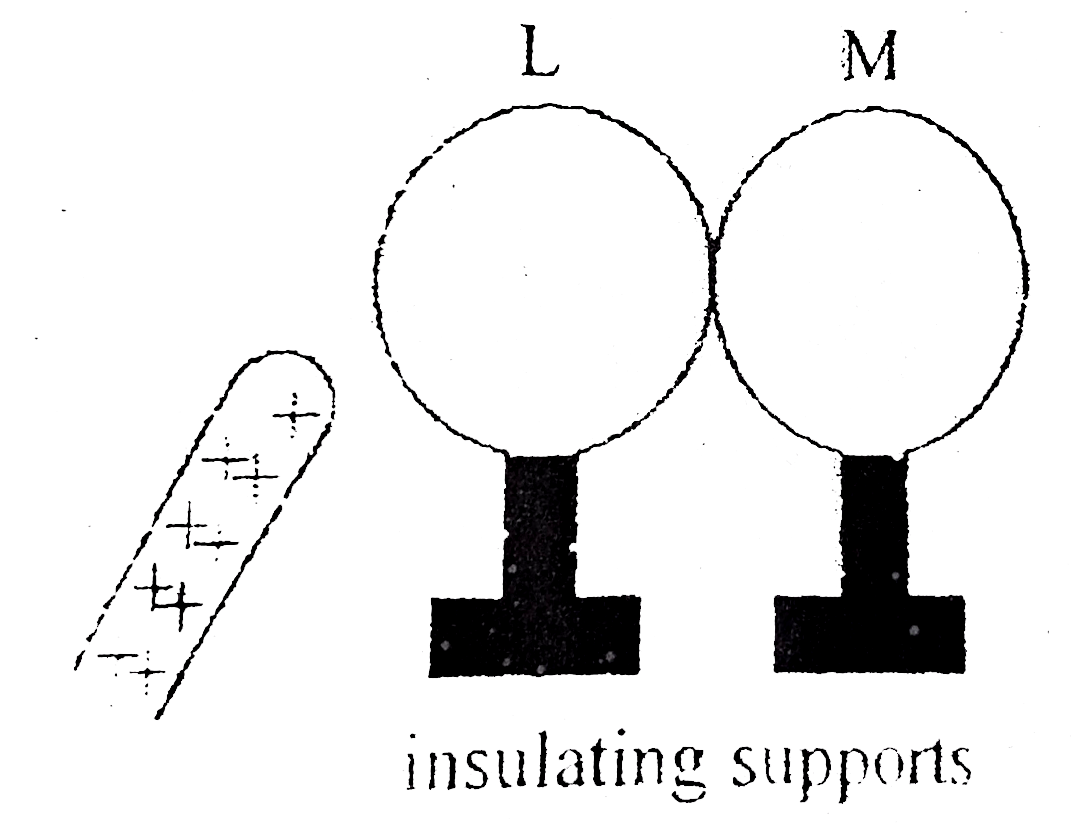Two isolated metal spheres are identical. They are electrically neutral and are touching. An electrically charged rod is then brought near the spheres without touching them, as the drawing shows. After a while, with the rod held in place, the spheres are separated, and teh rod is then removed. The following statements refere to the mases mA and mB of the spheres after they are separated and the rod is removed. Which of the follownig statements is true?

mA=mB
mA>mB if the rod is positive
mA>mB if the rod is negative
mA>mB irrespective of the charge (+ve or -ve) on the rod
The correct Answer is:D
If the rod has +ve charge, by induction a negative charge appears on A and a positive charge o B. When A has negative charge it has more mass (surplus electrons) than B.
Topper's Solved these Questions
Similar Questions
Knowledge Check
Two spheres are separately charged and then brought in contact, so
Atotal charge on the two spheres is conservedBtotal energy of the two spheres is conservedCBoth (a) and (b)Dnone of the aboveIf two conducting spheres are separately charged and then brought in contact
Athe total energy of the two spheres is conservedBthe total charge on the spheres is conservedCboth the total energy and charge are conservedDthe final potential is always the mean of the original potential of the two spheresA positive point charge q is brought near a neutral metal sphere.
AThe sphere becomes negatively charges.BThe sphere becomes positively charged.CThe interior remains neutral and the surface gets non-uniform charge distribution.DThe interior becomes positively charged and the surface becomes negatively charged.
An isolated solid metallic sphere is given +Q charge. The charge will be distributed on the sphere
View SolutionA metal sphere is kept on an insulating stand. A negatively charged rod is brought near it , then the sphere is earthed as shown. On removing the earthing, and taking the negatively charges rod away , what will be the nature of charges on the sphere? Give reason for your answer.

View SolutionHow can you charge a metal sphere negatively without touching it?
View SolutionIf two conducting spheres are separately charged and then brought in contact.
View SolutionTwo uncharged metal spheres, L and M, are in contact A positively charged rod is brought close to L, but not touching it, as shown. The two spheres are slightly separated and the rod is then withdrawn. As a result:

View Solution
